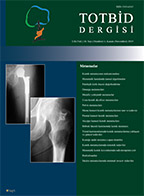
The bone is the most common tissue for metastatic disease following lung and liver. In most of the cases, palliative treatments and pain control were primary objectives in the past. Recently, significant improvements for the treatment of metastatic disease have been achieved. Today skeletal metastases are being diagnosed earlier due to the follow-up protocols with modern diagnostic tools. Besides, the frequency of the skeletal-related events diminished as a consequence of new chemotherapy and radiotherapy protocols, and target specific agents such as bisphosphonates and denosumab. All of these improvements were followed by expanded surgical techniques. Nowadays, minimally invasive osteosynthesis resulted with lower morbidity rates; new reconstructive surgeries result in acceptable functional outcomes even after broad surgical resections. In the end, even metastatic cases complicated with skeletal-related events such as pathological fractures, spinal cord compression or hypercalcemia are related to longer survival rates. We believe that is the reason orthopedic surgeons encounter these scenarios more often. In the field of oncology, primary tumor surgeries are still performed by specialized surgeons. However, metastatic disease or pathologic fractures are mostly managed by general orthopedic surgeons. For this reason, the subject of this review is the diagnostic algorithms of skeletal metastases, by hoping of contributing the daily orthopaedic practice.